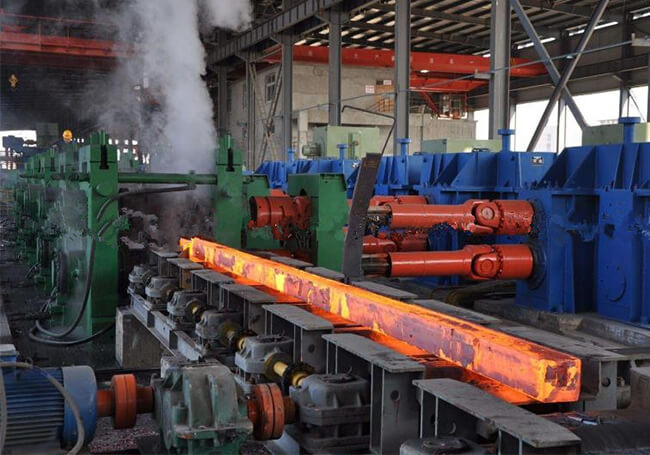Today we will explain to you the term "annealing" about the rolling production line.
Annealing is a metal heat treatment process: the metal is slowly heated to a certain temperature, held for a sufficient time, and then cooled at a suitable rate.
The purpose of annealing is to:
Improve or eliminate various structural defects and residual stress caused by steel in the process of casting, forging, rolling and welding, and prevent workpiece deformation and cracking.
Softens the workpiece for cutting.
Refine the grains and improve the structure to improve the mechanical properties of the workpiece.
Prepare the tissue for final heat treatment (quenching, tempering).
Commonly used annealing processes are:
1. Fully annealed
Heat the workpiece to a temperature of 30-50°C above the temperature at which all ferrite transforms into austenite, hold for a period of time, and then slowly cool with the furnace. During the cooling process, the austenite transforms again, which can make the steel structure thinner. .
2. Spheroidizing annealing
The workpiece is heated to 20-40°C above the temperature at which the steel begins to form austenite, and then slowly cooled after heat preservation. During the cooling process, the lamellar cementite in the pearlite becomes spherical, thereby reducing the hardness.
3. Isothermal annealing
Generally, it is first cooled to the most unstable temperature of austenite at a relatively fast rate, and the austenite is transformed into tortenite or sorbite for an appropriate time, and the hardness can be reduced.
4. Recrystallization annealing
The heating temperature is generally 50 to 150 °C below the temperature at which the steel begins to form austenite. Only in this way can the work hardening effect be eliminated and the metal soften.
5. Graphitization annealing
The casting is heated to about 950°C, kept for a certain period of time, and then cooled appropriately to decompose the cementite to form flocculent graphite, so that the cast iron containing a large amount of cementite becomes malleable cast iron with good plasticity.
6. Diffusion annealing
On the premise that no melting occurs, the casting is heated to the highest possible temperature, and kept for a long time, and slowly cooled after the diffusion of various elements in the alloy tends to be uniformly distributed. In this way, the chemical composition of the alloy casting is homogenized and its performance is improved.
7. Stress relief annealing
It is used to relieve internal stress of steel castings and welded parts. For iron and steel products, it is 100 to 200°C below the temperature at which austenite begins to form after heating, and the internal stress can be eliminated by cooling in the air after heat preservation.
This is our knowledge sharing about steel rolling production line today, I hope it can be helpful to you.
Welcome to Luoyang Judian, let us provide you with more services.

Please send us your request and we reply to you with in 24 hours.
Submit Request